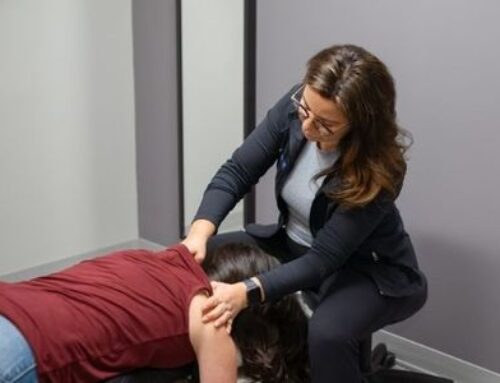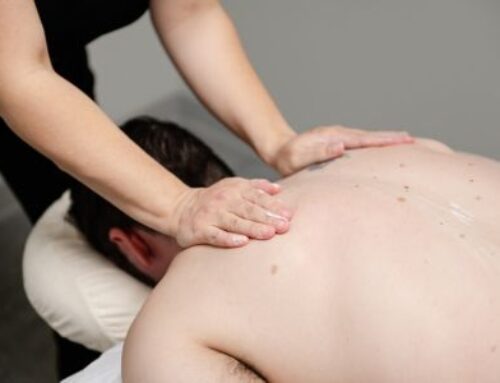Sign language is very physically demanding. The level of dexterity involved in signing is often overlooked. Sign language demands a lot of the upper extremities. From the shoulder to the fingers, signing involves constant flow and complex gestures to communicate what would otherwise be performed by a dual set of vocal folds. As a result, those that use sign language for daily communication or interpreting often experience issues with their shoulders, elbow and hands.
The Shoulders:
Shoulder tension, related to signing, is most often focused in two areas; the tops of the shoulders along the trapezius muscles and beneath the armpit along the teres muscles. Because sign language involves both large sweeping movements of the arm as well as compact rapid hand gestures, frequent signers often hold a lot of tension in their shoulders.
When it comes to the traps this is similar to how we hold our tension when working at a computer. As our mind focuses on complex tasks involving the hands and arms we tend to tense the trapezius muscles as a way to take tension out of the rest of the hand. This compensation allows for more fluid movements in the hands. The trade off is that after hours of doing this we can begin to experience a lot of tension that can feel like a stabbing where our neck meets the shoulder.
When it comes to the teres muscles this is more related to winging our elbows out from our sides. Many signers tend to hold their elbows out when signing. This is done to give themselves more room for hand gestures. The result is that we overwork the teres which will feel like tension and pain under our armpit and along the outside of our scapular blade.
The Elbows:
Elbow overuse is also common in sign language. This is due to the constant pronation and supination movements that signing requires. Pronation is the movement where the forearm rotates so that the palm of the hand would be facing downward. Supination is movement to the opposite position. This rapid exchange between the two while signing causes the wrist extensors and flexors to become overworked. Because these muscles attach at the elbow we often experience this as pain along the outside or inside of the elbows. This is similar to golfer’s and tennis elbow.
Wrists and Hands:
The most obvious example of physically demanding movements in sign language is the movements exhibited by the hands and wrists. Cramping along the thumb’s fat pad, in the palm and along the front or back of the wrist is very common with repetitive signing. It can often feel like the fingers are stiff and the hands contracted towards a closed position.
The Importance of Treatment:
If left untreated these points of muscle tension can evolve into more problematic conditions. You may experience tingling and numbness down the arm and into the hands. Sharp stabbing pains in either the shoulders, elbows or hands and even a loss of grip strength are possible. If you are experiencing pain while signing then make sure to book an appointment with me today.





